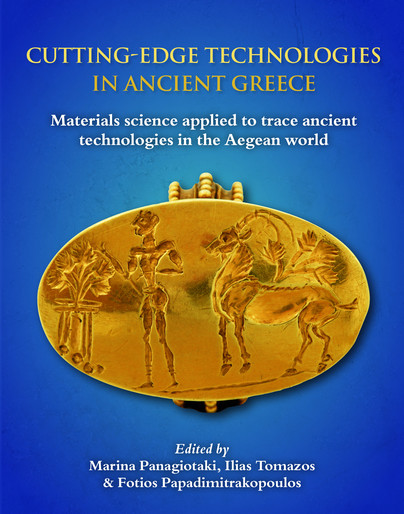
Format: Hardback
Pages: 256
ISBN: 9781789252989
Pub Date: 31 May 2020
Illustrations: b/w and colour
Description:
This volume examines materials produced with the use of fire and mostly by use of the kiln (metals, plasters, glass and glaze, aromatics)The technologies based on fire have been considered high-tech technologies and they have contributed to the evolution of man throughout historyPapers highlight technical innovations of the technician/artist/pyrotechnologist that lived in the Aegean (mainland Greece and the islands) during the Bronze Age, the Classical and the Byzantine periods
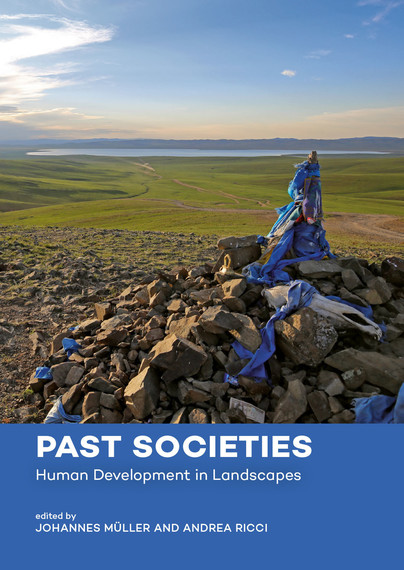
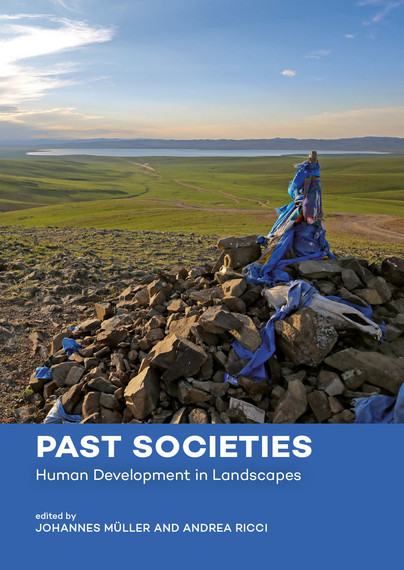
Pages: 200
ISBN: 9789088909252
Pub Date: 13 May 2020
Imprint: Sidestone Press
Illustrations: 37fc/17bw
Pages: 200
ISBN: 9789088909245
Pub Date: 13 May 2020
Imprint: Sidestone Press
Illustrations: 37fc/17bw
Description:
From the North Atlantic to the Persian Gulf and from Peru to the Near East, this book illustrates different studies on the interfluve of environments and societies in landscapes and describes certain historical moments and processes in which the interplay of ecological and societal factors is entangled.
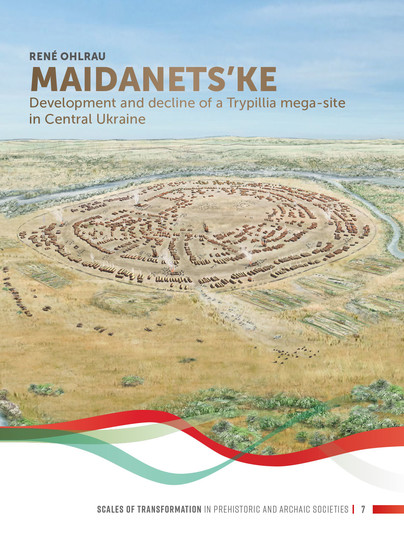
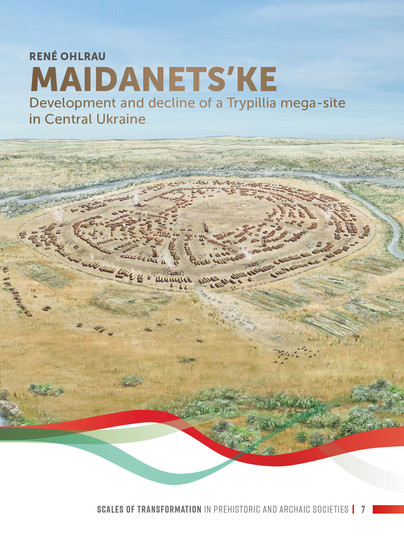
Pages: 312
ISBN: 9789088908491
Pub Date: 30 Apr 2020
Imprint: Sidestone Press
Series: Scales of Transformation
Illustrations: 93fc/141bw
Pages: 312
ISBN: 9789088908484
Pub Date: 30 Apr 2020
Imprint: Sidestone Press
Series: Scales of Transformation
Illustrations: 93fc/141bw
Description:
At the end of the 5th millennium BCE, some of the vastest settlements of the time emerged on the forest steppe north of the Black Sea. The largest of these sites were found between the Southern Bug and Dnieper river. There they occur only tens of kilometres apart and are assumed to be partly coeval.
The Trypillia ‘mega-sites’ reached sizes of up to 320 hectares with up to 3000 buildings in one place. During their peak times as many as 11.000 people could have lived in one of those settlements. But how did people come together in these Trypillia ‘mega-sites’ with several thousand dwellings? How long were such sites inhabited, and how many people lived there? Were these settlements the first towns, preceding the Mesopotamian development? To address these questions, this book presents the results of the investigations at the Maidanets'ke ‘mega-site’. To date, Maidanets'ke represents the most complex of these enormous sites and is also among the best investigated ones. Based on new excavations by international teams, the settlement’s history, its structure and regional context are addressed. The excavation results, with features like a pottery production site, a causewayed enclosure and several dwellings, are presented in detail. An extensive radiocarbon dating program conducted on various parts of the site, in combination with pottery studies, revealed several phases of continuous occupation between 3990-3640 cal BCE. According to the number of contemporary structures, the demography of a ‘mega-site’ is reconstructed in detail for the first time. Targeted geophysical surveys in the core area of the ‘mega-site’ phenomenon show that exceptional non-inhabited buildings and so-called mega-structures occur regularly in both larger and smaller settlements. Overall, the Trypillia settlement system appears scalable, with small sites being structurally similar to larger ones. With no clear differences in the settlement pattern except size, the urban character of ‘mega-sites’ is called into question.
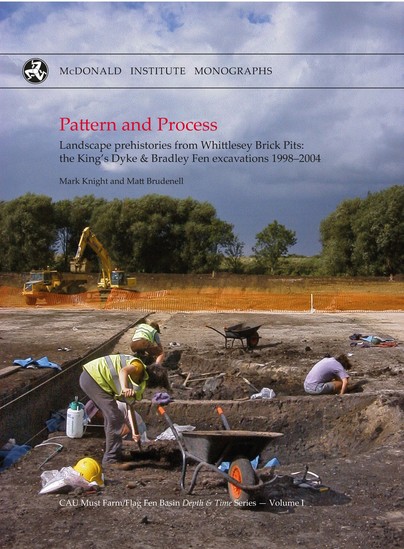
Format: Hardback
Pages: 280
ISBN: 9781902937939
Pub Date: 05 Apr 2020
Imprint: McDonald Institute for Archaeological Research
Series: CAU Must Farm/Flag Fen Basin Depth & Time Series
Description:
The King’s Dyke and Bradley Fen excavations occurred within the brick pits of the Fenland town of Whittlesey, Cambridgeshire. The investigations straddled the south-eastern contours of the Flag Fen Basin, a small peat-filled embayment located between Peterborough and the western limits of Whittlesey ‘island’. Renowned principally for its Bronze Age discoveries at sites such as Fengate and Flag Fen, the Flag Fen Basin also marked the point where the prehistoric River Nene debouched into the greater Fenland Basin.
A henge, two round barrows, an early fieldsystem, metalwork deposition and patterns of sustained settlement along with metalworking evidence helped produce a plan similar in its configuration to that revealed at Fengate. In addition, unambiguous evidence of earlier second millennium BC settlement was identified together with large watering holes and the first burnt stone mounds to be found along Fenland’s western edge. Genuine settlement structures included three of Early Bronze Age date, one Late Bronze Age, ten Early Iron Age and three Middle Iron Age. Later Bronze Age metalwork, including single spears and a weapon hoard, was deposited in indirect association with the earlier land divisions and consistently within ground that was becoming increasingly wet. The large-scale exposure of the base of the Flag Fen Basin at Bradley Fen revealed a beneath-the-peat or pre-basin landscape related to the buried floodplain of an early River Nene. Above all, the revelation of sub-fen occupation means we can now situate the Flag Fen Basin in time as well as space.
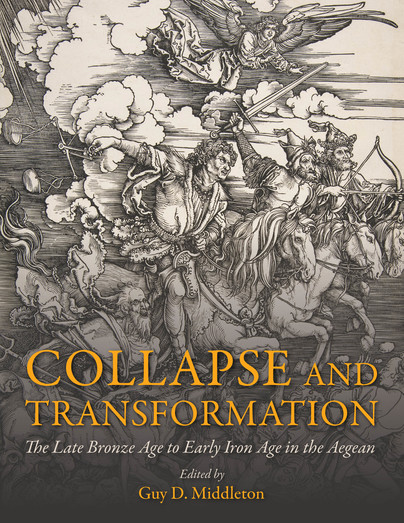
Format: Hardback
Pages: 280
ISBN: 9781789254259
Pub Date: 01 Apr 2020
Description:
The years c. 1250 to 1150 BC in Greece and the Aegean are often characterised as a time of crisis and collapse. A critical period in the long history of the region and its people and culture, they witnessed the end of the Mycenaean kingdoms, with their palaces and Linear B records, and, through the Postpalatial period, the transition into the Early Iron Age.
But, on closer examination, it has become increasingly clear that the period as a whole, across the region, defies simple characterisation – there was success and splendour, resilience and continuity, and novelty and innovation, actively driven by the people of these lands through this transformative century. The story of the Aegean at this time has frequently been incorporated into narratives focused on the wider eastern Mediterranean, and most infamously the ‘Sea Peoples’ of the Egyptian texts. In twenty-four chapters written by specialists, Collapse and Transformation instead offers a tight focus on the Aegean itself, providing an up-to date picture of the archaeology ‘before’ and ‘after’ ‘the collapse’ of c. 1200 BC. It will be essential reading for students and scholars of the Aegean and eastern Mediterranean regions, as well as providing data and a range of interpretations to those studying collapse and resilience more widely and engaging in comparative studies. Introductory chapters discuss notions of collapse, and provide an overview the Mycenaean collapse. These are followed by twelve chapters, which review the evidence from the major regions of the Aegean, including the Argolid, Messenia, and Boeotia, Crete, and the Aegean islands. Six chapters then address key themes: the economy, funerary practices, the Mycenaean pottery of the mainland and the wider Aegean and eastern Mediterranean region, religion, and the extent to which later Greek myth can be drawn upon as evidence or taken to reflect any historical reality. The final four chapters provide a wider context for the Aegean story, surveying the eastern Mediterranean, including Cyprus and the Levant, and the themes of subsistence and warfare.
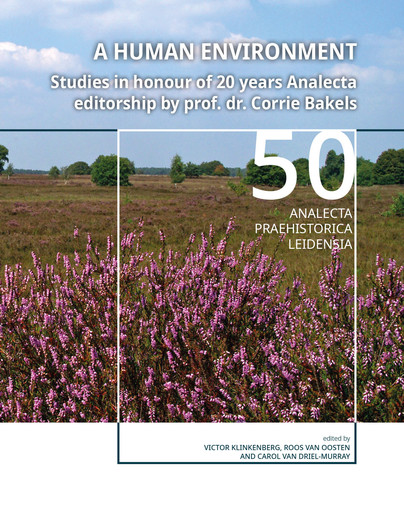
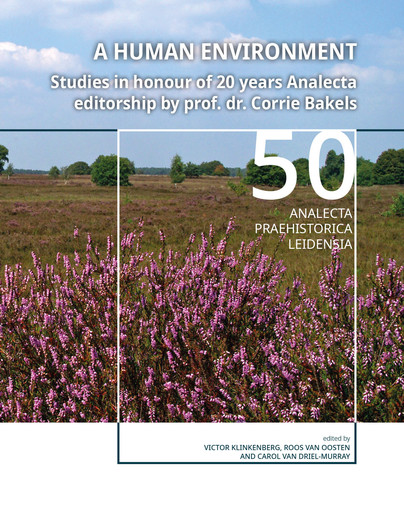
Pages: 196
ISBN: 9789088909078
Pub Date: 20 Mar 2020
Imprint: Sidestone Press
Series: Analecta Praehistorica Leidensia
Illustrations: 60fc/21bw
Pages: 196
ISBN: 9789088909061
Pub Date: 20 Mar 2020
Imprint: Sidestone Press
Series: Analecta Praehistorica Leidensia
Illustrations: 60fc/21bw
Description:
This volume is themed around the interdependent relationship between humans and the environment, an important topic in the work of Corrie Bakels. How do environmental constraints and opportunities influence human behaviour and what is the human impact on the ecology and appearance of the landscape? And what can archaeological knowledge contribute to the current discussions about the use, arrangement and depletion of our (local) environment?
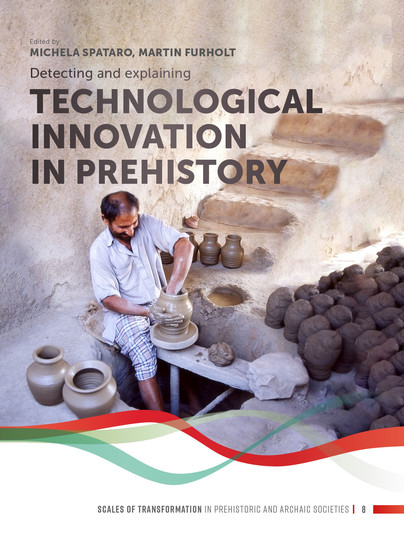
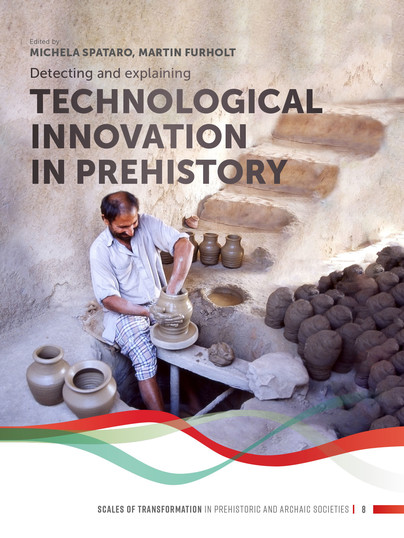
Pages: 250
ISBN: 9789088908255
Pub Date: 25 Feb 2020
Imprint: Sidestone Press
Series: Scales of Transformation
Illustrations: 37fc/22bw
Pages: 250
ISBN: 9789088908248
Pub Date: 25 Feb 2020
Imprint: Sidestone Press
Series: Scales of Transformation
Illustrations: 37fc/22bw
Description:
Technology refers to any set of standardised procedures for transforming raw materials into finished products. Innovation consists of any change in technology which has tangible and lasting effect on human practices, whether or not it provides utilitarian advantages. Prehistoric societies were never static, but the tempo of innovation occasionally increased to the point that we can refer to transformation taking place.
Prehistorians must therefore identify factors promoting or hindering innovation. This volume stems from an international workshop, organised by the Collaborative Research Centre 1266 ‘Scales of Transformation’ at Kiel University in November 2017. The meeting challenged its participants to detect and explain technological change in the past and its role in transformation processes, using archaeological and ethnographic case studies. The papers draw mainly on examples from prehistoric Europe, but case-studies from Iran, the Indus Valley, and contemporary central America are also included. The authors adopt several perspectives, including cultural-historical, economic, environmental, demographic, functional, and agent-based approaches. These case studies often rely on interdisciplinary research, whereby field archaeology, archaeometric analysis, experimental archaeology and ethnographic research are used together to observe and explain innovations and changes in the artisan’s repertoire. The results demonstrate that interdisciplinary research is becoming essential to understanding transformation phenomena in prehistoric archaeology, superseding typo-chronological description and comparison. This book is a scholarly publication aimed at academic researchers, particularly archaeologists and archaeological scientists working on ceramics, osseous and metal artefacts.
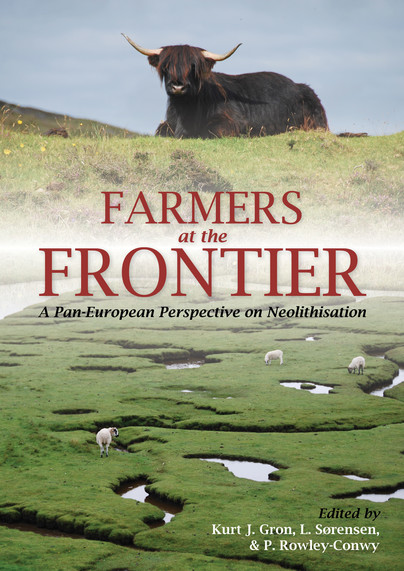
Format: Hardback
Pages: 464
ISBN: 9781789251401
Pub Date: 25 Feb 2020
Illustrations: b/w and colour
Description:
All farming in prehistoric Europe ultimately came from elsewhere in one way or another, unlike the growing numbers of primary centers of domestication and agricultural origins worldwide. This fact affects every aspect of our understanding of the start of farming on the continent because it means that ultimately, domesticated plants and animals came from somewhere else, and from someone else. In an area as vast as Europe, the process by which food production becomes the predominant subsistence strategy is of course highly variable, but in a sense the outcome is the same, and has the potential for addressing more large-scale questions regarding agricultural origins.
Therefore, a detailed understanding of all aspects of farming in its absolute earliest form in various regions of Europe can potentially provide a new perspective on the mechanisms by which this monumental change comes to human societies and regions. In this volume, we aim to collect various perspectives regarding the earliest farming from across Europe. Methodological approaches, archaeological cultures, and geographic locations in Europe are variable, but all papers engage with the simple question: What was the earliest farming like? This volume opens a conversation about agriculture just after the transition in order to address the role incoming people, technologies, and adaptations have in secondary adoptions. The book starts with an introduction by the editors which will serve to contextualize the theme of the volume. The broad arguments concerning the process of neolithisation are addressed, and the rationale for the volume discussed. Contributions are ordered geographically and chronologically, given the progression of the Neolithic across Europe. The editors conclude the volume with a short commentary paper regarding the theme of the volume.
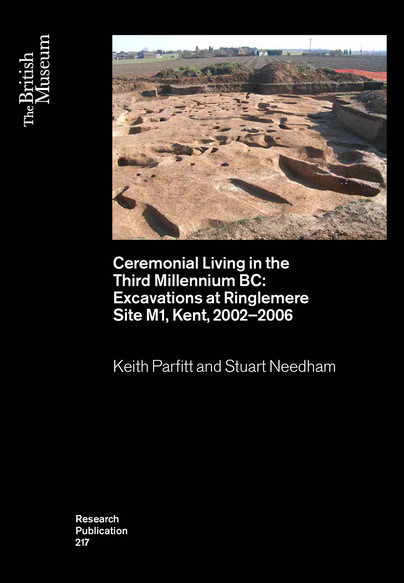
Format: Paperback
Pages: 200
ISBN: 9780861592173
Pub Date: 31 Jan 2020
Imprint: British Museum Press
Series: British Museum Research Publications
Illustrations: 120
Description:
The discovery in 2001 of an exquisite Early Bronze Age gold cup at Ringlemere Farm in Kent prompted an extensive survey and excavation of the site from 2002–2006. Excavation revealed a site with a long history of use, the most striking evidence being for intensive activity in the third millennium BC associated with a henge monument, the interior of which was later buried beneath an Early Bronze Age mound.This volume presents a detailed report on a rich array of structural and artefactual evidence spanning a few thousand years of prehistory, and the site’s subsequent slide into agricultural anonymity.
Late Neolithic to Early Bronze Age structures include a horseshoe setting, post alignments, hearths, pit clusters and varied small post settings. Evaluation of form and associated material culture steers interpretation away from the purely domestic and contributes to the keen ongoing debate about the place of ceremony in the world of third millennium Britain.
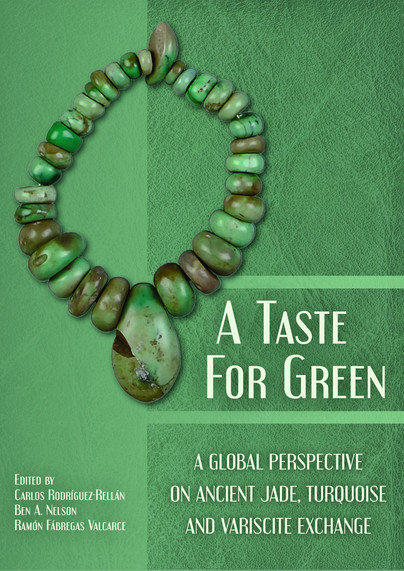
Format: Hardback
Pages: 192
ISBN: 9781789252743
Pub Date: 31 Dec 2019
Illustrations: b/w and colour
Description:
Often along vast expanses, ancient societies traded certain commodities that were considered valuable either for functional or symbolic reasons – or, rather, a mixture of both factors. A Taste for Green addresses latest research into the acquisition of jade, turquoise or variscite, all of which share a characteristic greenish colour and an engaging appearance once they are polished in the shape of axes or assorted adornments. Papers explore how, in addition to constituting economic transactions, the transfess of these materials were also statements of social liaisons, personal capacities, and relation to places or to unseen forces.
The volume centres on two study areas, Western Europe and México/Southwest US, which are far apart not just in geographical terms but also with regard to their chronology and socioeconomic features. While some North and Mesoamerican groups range from relatively complex farming societies up to state-like organisations during the 1st and 2nd millennia AD, the European counterparts are comparatively simpler polities spanning the 5th–3rd millennia BC. By contrasting the archaeological evidence from diverse areas we may gain insights into the role that production/movement of these green stones played in their respective political and ritual economies. Also, we think it useful to compare the scientific approaches applied to this question in different parts of the globe, specially Asia.
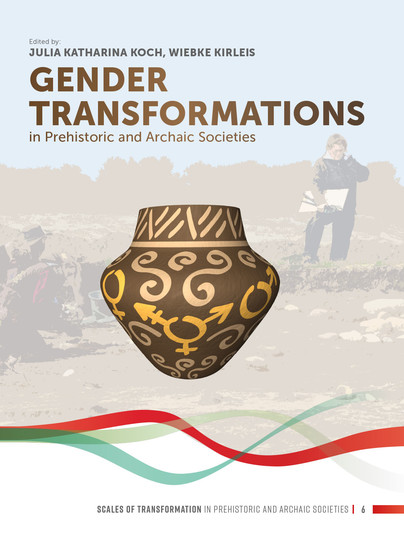
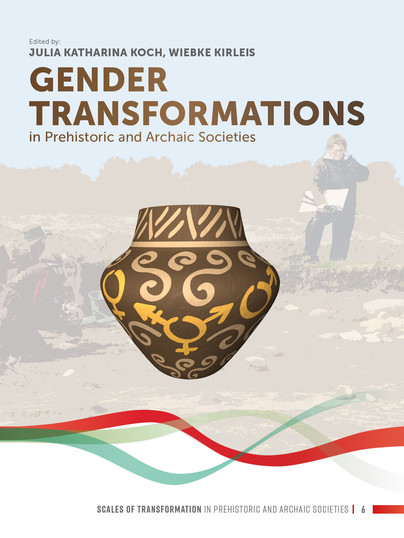
Pages: 500
ISBN: 9789088908224
Pub Date: 17 Dec 2019
Imprint: Sidestone Press
Series: Scales of Transformation
Pages: 500
ISBN: 9789088908217
Pub Date: 17 Dec 2019
Imprint: Sidestone Press
Series: Scales of Transformation
Description:
In which chronological, spatial, and social contexts is gender a relevant social category that is noticeable in the archaeological material? How can transformations in social gender relations and identity be recognized archaeologically? Is the identity of prehistoric people defined by gender?
If so, what is the accompanying cultural context? What about gender equality among the scientists working in archaeology? In what degree are research teams, as well as their scientific approaches, biased today? These and other burning questions are intensively discussed in this volume, which comprises 25 contributions presented at the international workshop ‘Gender Transformations in Prehistoric and Archaic Societies’, organised by the Collaborative Research Centre 1266 of Kiel University funded by the German Research Foundation (DFG). The workshop offered a platform to discuss a broad range of approaches on the inter-dependencies between gender relations and socio-environmental transformation processes. Beyond a focus on the archaeology of women, gender archaeology offers a variety of possibilities to reconstruct the contribution of social groups differentiated e.g. by age, gender, and activities related to cultural transformation, based on the archaeological material. Thus, this volume includes papers dealing with different socio-economic units, from south-western Europe to Central Asia, between 15,000 and 1 BCE, paying particular attention to the scale of social reach. Since gender archaeology, and in particular feminist archaeology, also addresses the issue of scientific objectivity or bias, parts of this volume are dedicated to equal opportunity matters in archaeological academia across the globe. This is realised by bringing together feminist and female experiences from a range of countries, each with its own specific individual, cultural, and social perspectives and traditions. The papers are organised along three central topics: ‘Gendering fieldwork’, ‘Tracing gender transformations’, and ‘Gendering and shaping the environment’. By gendering the archaeological discussion on transformation processes, the contributions aim to more firmly embed gender-sensitive research in the archaeological agenda, not just in Europe, but world-wide.
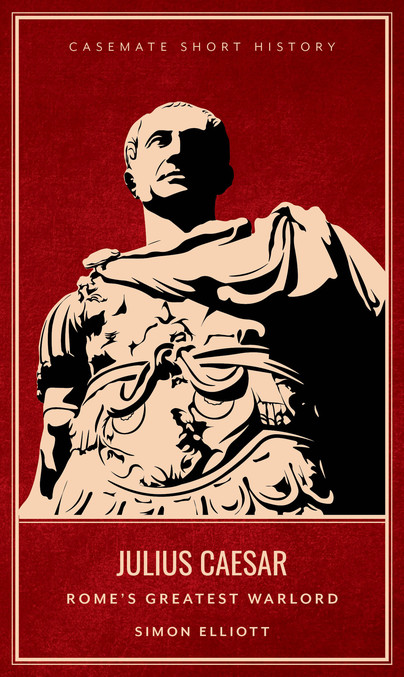
Format: Hardback
Pages: 160
ISBN: 9781612007090
Pub Date: 31 Oct 2019
Imprint: Casemate Publishers
Series: Casemate Short History
Illustrations: 30 black and white photos and diagrams
Description:
Julius Caesar has been the inspiration to countless military commanders over the last two millennia. Born into an aristocratic family, his early military campaigns, part of his progression along the cursus honorum, included campaigning in the east, Spain and in the early Roman civil wars. His participation in the Gallic Wars is known mainly through the commentary on the wars that he wrote and published, along with his incursions into Britain.
This concise history details his military life, and how it impacted with his political career, from his youth through the civil wars that resulted in his becoming the dictator of Rome, and his legacy.
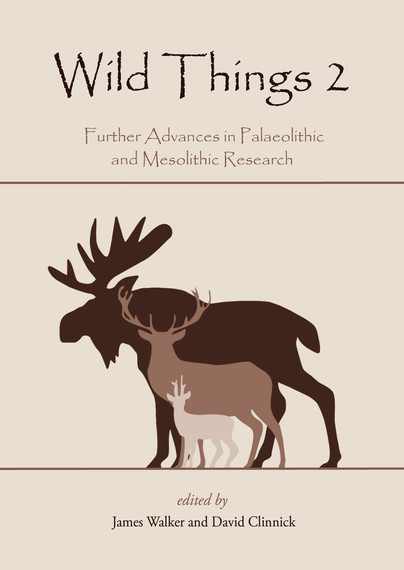
Format: Paperback
Pages: 208
ISBN: 9781785709463
Pub Date: 31 Oct 2019
Description:
Building on the first Wild Things volume (Oxbow Books 2014) which aimed to showcase the research putting archaeologists researching the Palaeolithic and Mesolithic at the cutting edge of understanding humanity’s past, this collection of contributions presents recent research from an international group of both early career and established scientists.Covering aspects of both Palaeolithic and Mesolithic research in order to encourage dialogue between practitioners of archaeology of both periods, contributions are also geographically diverse, touching on British, European, North American and Asian archaeology. Topics covered include transitional periods, deer and people, stone tool technologies, pottery, land-use, antler frontlets, and the development of prehistoric archaeology an 'age of wonder'.
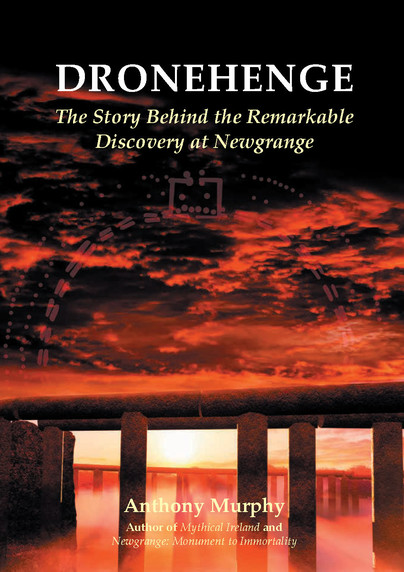
Format: Paperback
Pages: 250
ISBN: 9780995792791
Pub Date: 18 Oct 2019
Imprint: Liffey Press
Illustrations: 75 colour photographs
Description:
In July 2018, Anthony Murphy and Ken Williams discovered a giant previously unknown monument close to Newgrange while flying their drones over the Boyne Valley. They found what archaeologists believe to be a Late Neolithic henge monument, measuring 154 metres (just over 500 feet) in diameter, and a number of other mysterious and intriguing features. Their discoveries became an internet and media sensation and made headlines all around the world.
In the days, weeks and months that followed, there was intense interest in these gigantic relics of the prehistoric world. Archaeologists pored over the drone imagery and the National Monuments Service conducted their own helicopter flights over Brú na Bóinne World Heritage Site to capture the features in more detail. In Dronehenge, Anthony Murphy tells the story of the remarkable discovery of this monument, and attempts to unravel some of its mysteries. Anthony describes the events that followed the first social media post about the discovery and how he spent three weeks doing little else but taking phone calls, answering emails and engaging in Skype calls with media all around the world. Lavishly illustrated, Dronehenge includes discussion of how this monument might have been constructed and what it might have been used for, and includes 3D models of its likely appearance. Anthony explains how the henge, along with the other features discovered, completely changes our view of the Brú na Bóinne landscape, and why it will have archaeologists and historians studying them for many years to come.
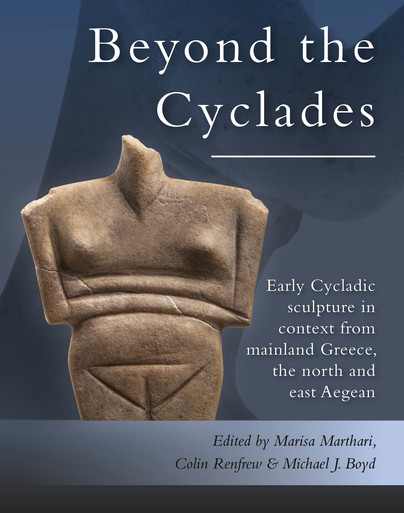
Format: Hardback
Pages: 328
ISBN: 9781789250602
Pub Date: 15 Oct 2019
Illustrations: b/w
Description:
This second volume on Early Cycladic (and Cycladicising) sculptures found in the Aegean, examines finds from mainland Greece, along with the rarer items from the north and east Aegean, with the exception of those discovered in the Cyclades (covered in the preceding volume), and of those found in Crete. The significance of these finds is that these are the principal testimonies of the influence of the Early Bronze Age Cycladic cultures in the wider Aegean. This influence is shown both by the export of sculptures produced in the Cyclades (and made of Cycladic marble), and of their imitations, produced elsewhere in the Aegean, usually of local marble.
They hold the key, therefore, to the cultural interactions developing at this time, the so-called ‘international spirit’ manifest particularly during the Aegean Early Bronze II period.This was the time when the foundations of early Aegean civilisation were being laid, and the material documented is thus of considerable significance. The volume is divided into sections wherein contributions examine finds and their archaeological, social, and economic contexts from specific regions. It concludes with an overview of the significance and role of these objects in Early Bronze Age societies of the Aegean and eastern Mediterranean region. This will be the first time that this material has been systematically gathered together. Highly illustrated, it follows and builds on the successful preceding volume, Early Cycladic Sculpture in Context (Oxbow 2016).
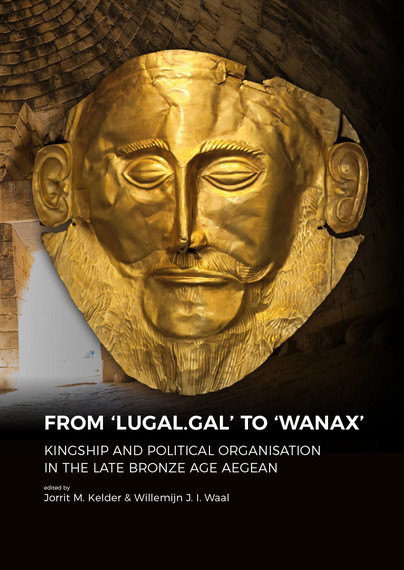
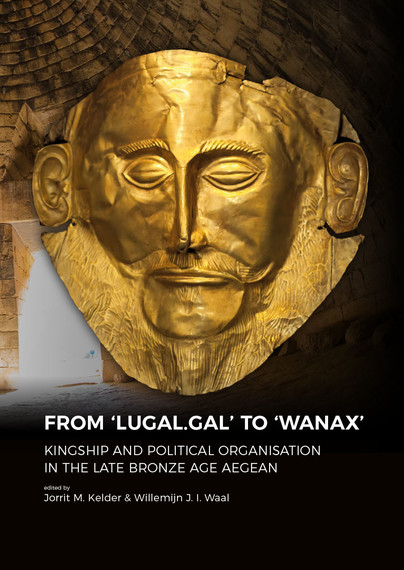
Pages: 140
ISBN: 9789088908002
Pub Date: 10 Oct 2019
Imprint: Sidestone Press
Illustrations: 2fc/15bw
Pages: 140
ISBN: 9789088907982
Pub Date: 10 Oct 2019
Imprint: Sidestone Press
Illustrations: 2fc/15bw
Description:
In this book the much-debated problem of political organization in Mycenaean Greece (ca. 1400-1200 BC) is analysed and contextualised through the prism of archaeology and contemporary textual (Linear B, Egyptian and Hittite) evidence. From the early 14th century BC onwards, Hittite texts refer to a land Ahhiya(wa).
The exact geographic position of this land has been the focus of academic debate for more than a century, but most specialists nowadays agree that it must have been a Hittite designation for a part, or all of, the Mycenaean world. On at least two occasions, the ruler of Ahhiyawa is designated as LUGAL.GAL –‘Great King’-; a title that was normally reserved for a select group of kings (such as the kings of Egypt, Assyria, Mitanni, Babylon and Hatti itself). The Hittite attribution of this title thus seems to signify the Ahhiyawan King’s supra-regional importance: it indicates his power over other, ‘lesser’ kings, and suggests that his relation to these vassals must have been comparable to the relations between the Hittite King and his own vassal rulers. The apparent Hittite perception of such an important ruler in the Mycenaean world is, however, completely at odds with the prevailing view of the Mycenaean world as a patchwork of independent states, all of which were ruled by a local ‘wanax’ -King. The papers in this volume address this apparent dichotomy and discuss various interpretations of the available evidence, and contextualise the role of the ruler in the Mycenaean world through comparisons with the contemporary Near East.






















